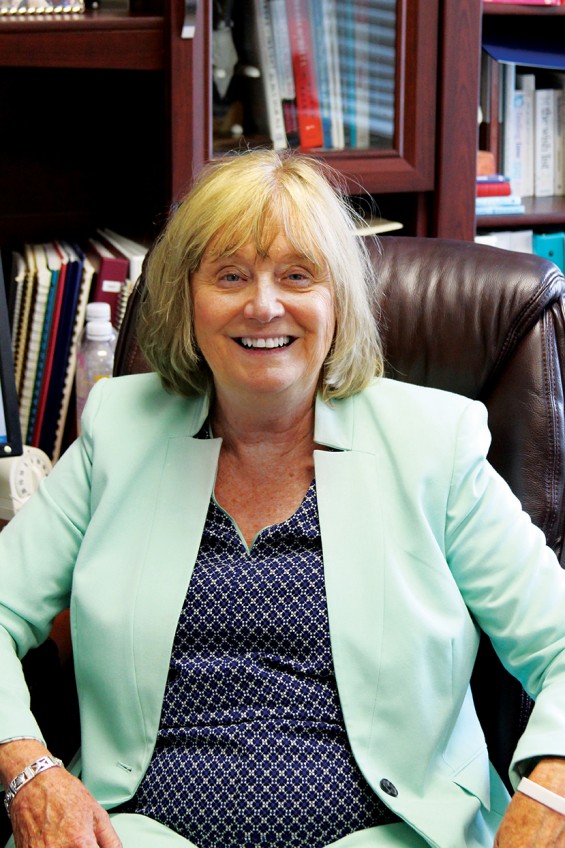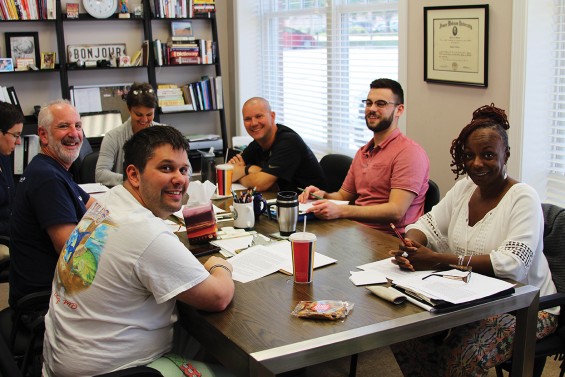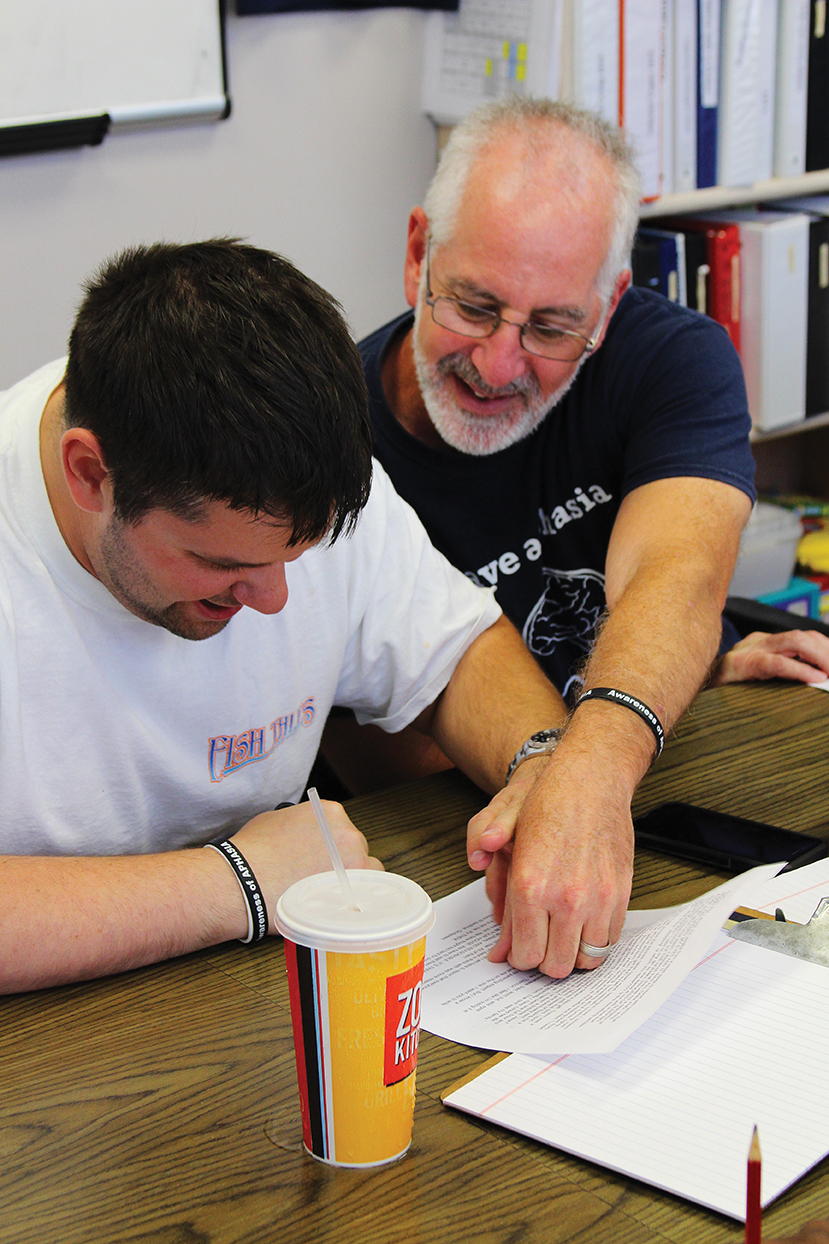Imagine being able to laugh, joke and share stories with your family one day, only to lose this ability to communicate the next. With a stroke, that can happen at any time. And if it does, the Stroke Comeback Center (SCC) in Vienna is ready to help.
For the past decade, founder Darlene Williamson and the SCC has been helping their members – stroke victims – live successfully with a focus on support, communication and community. With access to technology, fitness opportunities and specialized group sessions, members in all stages of recovery have the tools they need to re-engage in life.

Founder and Executive Director Darlene Williamson dedicates her time to helping stroke survivors and others with aphasia live successfully.
Founded when individuals and families of stroke-affected individuals couldn’t complete their treatment due to insurance restrictions, Williamson says the SCC was created to answer the question, “Now what?”
A stroke occurs when the blood supply to the brain is blocked or interrupted. A common yet life-threatening event, a stroke can affect anyone at any time, regardless of race, sex or age, but the risk of one is higher in people with poor diets and in those who smoke. There are two types of stroke, an ischemic stroke (a clot in a brain artery) and a hemorrhagic stroke (a brain artery ruptures). All strokes are medical emergencies.
Williamson is an expert in speech-language pathology, specifically with the problems caused by aphasia. Aphasia, which affects 1 in every 250 people in the US, often occurs as a result of a stroke and greatly limits a person’s ability to communicate the way they want to.
“This is not a disorder of intelligence,” Williamson says. “These people do not lose their intelligence, they just have difficulty manipulating language. And the four areas of manipulating language are listening, reading, writing and speaking.” She relates it to the obstacles of learning a foreign language, where these four areas of communication must be learned again with a new language. For people with aphasia, it’s not much different.
Helping people relearn their ability to speak is no easy task. It takes a lot of therapy to relearn each of the 26 individual phonemes in the English language, how to form them, and how to put them together. But with the help of special technology pioneered by the SCC, speech improvement is an attainable goal.
“Technology is so supportive and assistive for people who have difficulty communicating,” Williamson explains. “For each session we give them, they’re able to watch the same session hundreds of times at home.” With the help of her son, Williamson was able to launch Video Assisted Speech Technology (VAST) on the Apple Store and online, making is easily accessible to those who need it.
Here’s how it works: Using the website speakinmotion.com or the accompanying iPhone application, users have access to individualized and mobile speech practice. By watching close-up videos of a person’s mouth while they speak certain pre-recorded words and phrases, a person with aphasia can learn to produce the same lip and tongue patterns required for repeating these words and phrases. According to independent research done by the Aphasia Lab at the University of South Carolina, stroke survivors suffering from non-fluent aphasia whose recovery process included VAST techniques could produce 60% more words than they could before the program.
Williamson is also researching other uses for the VAST technology, including aiding children with developmental apraxia as well as people with autism or other speech-impacting disorders. VAST can be utilized by both children and adults, and is even trying out music therapy – the idea being that music stimulates several different areas of the brain and can therefore enhance speech therapy techniques.
Since VAST is available both online and on mobile devices, the SCC provides all the technology necessary to access the program. With a computer lab equipped with webcams, headphones and microphones, as well as iPhones and iPads for members to use, individualized speech therapy is only a click away.
In addition to technological services, the SCC offers a variety of community programs for its members in an easy to get to location. Accessible by Metro and bus, there’s always a way to get to the center and take part in their activities.
“It’s all about living successfully,” Williamson says. “We do all our work in groups, and our groups are built around areas of communication.”

Groups consist of members and certified facilitators to manage each session. Clockwise from left: Chris Vincent, Randy Kernus, Ashley Beard, Melissa Richman, Jerry Shrouds, intern Jordan Barr, and Joyce Simmons.
The center breaks up the year into several nine-week sessions in order to adjust the services to match up with the level of care the members need. Meeting Monday through Thursdays during the sessions, the available services include writing workshops, book clubs, reading strategies, VAST work periods, brain games and fitness programs. And even when a session ends, the care and support does not. Members are welcome to enroll in as many sessions as they need for as long as they would like. The only center of its kind in the DC Metro area, the SCC is only one of six like it in the nation. Additionally, you don’t have to suffer from a stroke to come to the center; members include people with other cognitive and physical impairments, those with aphasia as a result of other causes, and even wounded warriors.
Though the SCC is a non-profit, there are some fees for sessions and services in order to keep the organization running. For those who don’t have the means to pay in full, the SCC is dedicated to finding a plan that will work for everyone regardless of ability to pay. No one is turned away based on their financial situation, and close to one quarter of the center’s members are on scholarship.
“The fees only cover about half of our overhead, so the remainder has to come from somewhere. We do fundraising events throughout the year, and then we have a loyal base of donors who contribute small amounts to us on an annual basis, and a couple of angels who donate larger amounts.” Williamson explains, adding that they also have a few grants along with some corporate support. “And with that, we manage to stay afloat.”
As engaging in the community is crucial both for the members to recover and for the SCC to raise awareness about strokes, they take part in an annual event at Nationals Park. Strike Out Stroke is a facet of a non-profit organization that holds education and awareness events nationwide, partnering with the local stroke centers (like the SCC) and charities in the area of the event.
“Strokes are not going away,” Williamson says. “But the number of stroke survivors has only been increasing.” And the SCC will be there to help everyone that needs it.
Stroke Risk Factors
- Health Conditions
Previous stroke/mini-stroke, High blood pressure, High cholesterol, Heart disease, Diabetes, Sickle Cell disease - Behavior
Unhealthy diet (high in saturated fat, trans fat,
cholesterol), Physical inactivity, Obesity, Smoking, Drinking alcohol in excess, Family History, Genetic factors that may affect blood pressure and cholesterol levels
Act FAST!
Anyone can fall victim to a stroke. Know the signs and act FAST.
- Face – Does one side of the face seem to droop?
- Arms – Is one arm weak or numb?
- Speech – Is there difficulty speaking?
- Time – 32,000 brain cells can die every second.
It’s important to call 911 as soon as you notice these symptoms, as early intervention can help prevent worse damage.






